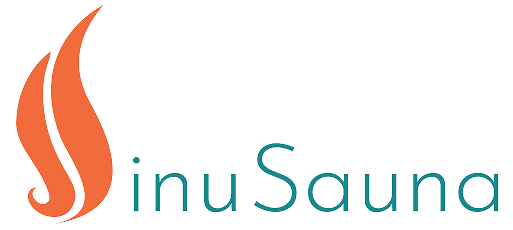When spring pollen, summer grasses, or fall weeds unleash their allergens, many of us brace for the usual suspects such as itchy eyes, runny nose, sneezing. But for some, the worst part is the nasal congestion, sinus pressure and sleep‑disruption that follow. If you’re reading this, you may already be tired of waking up with a “stuffy head,” mouth‑breathing at night, or feeling sluggish from poor sleep.
The good news is you can build a routine to reduce the impact of allergy season, one that goes beyond the classic antihistamine + nasal spray recipe. In this blog we’ll walk through:
-
Why congestion happens during allergy season
-
A full wellness routine (lifestyle + environment + habits) to fight it
-
How heated dry‑air therapy (using the SinuSauna mask) can slot into that routine
Let’s dive in.
Why Congestion Happens During Allergy Season
Allergy symptoms are triggered when your immune system reacts to airborne triggers (pollen, molds, dust mites, pet dander).
-
When allergens enter your nasal passages they irritate the mucosa (the lining of your nose and sinuses). This triggers inflammation and increased mucus production.
-
That mucus is supposed to help trap and flush allergens, but when the system is overwhelmed you get thick, sticky secretions, blocked passages, and increased pressure.
-
Congestion is more than just “stuffed nose,” it robs you of restful sleep (because you may breathe through your mouth, snore, wake up with post‑nasal drip) and can increase the risk of secondary sinus infection.
-
Environment and habits matter–high‑pollen days, open windows, pet dander, carpet, bedding, and poor ventilation all play a role.
In short, if you want to survive allergy season with a clear head (literally and figuratively), you’ll need a multi‑pronged routine including trigger‑avoidance, daily maintenance, plus supportive tools for drainage and clear airways.
A Congestion‑Fighting Routine Checklist
Here’s a framework you can adapt. Think of this as the “toolbox” you’ll pull from each day/each week. The key is consistency.
Environmental & trigger‑control layer
-
Check pollen counts and try to minimize outdoor exposure during peak hours (usually early morning and late afternoon).
-
Keep windows closed (especially on high‑pollen days), run your AC or filter rather than letting pollen blow in, and consider a HEPA filter in your bedroom.
-
Wash bedding in hot water weekly, vacuum carpets/rugs, reduce clutter where dust and allergens collect.
-
Shower (and change clothes) after being outside so you don’t bring allergens to your bed.
Daily/Every‑other‑day airway care and hydration
-
Drink plenty of water: Hydration helps thin mucus so it drains rather than sticking.
-
Consider saline nasal rinses or sprays to flush allergens and clear mucus buildup.
-
Breathing exercises, gentle movement, or yoga can support circulation and sinus drainage. For example, inversions and backbends encourage sinus drainage and help reduce inflammation.
-
Elevate your head while sleeping or use pillows to help drainage overnight.
Pre‑bed routine (to support sleep and reduce overnight congestion)
-
Clean air in the bedroom (use a filter, keep windows closed if required).
-
Avoid heavy dairy or alcohol late in the evening if you notice they worsen your congestion (some people are sensitive).
-
Use a comfortable humidifier if your air is very dry (but avoid excessive humidity which can encourage dust mites and mold).
-
Add heated dry‑air therapy (more on this below) to open airways and prep for restful sleep.

Integrating Heated Dry‑Air Therapy with the SinuSauna Mask
Now let’s spotlight a tool you may not have considered, the SinuSauna heated dry air therapy mask that was invented by doctors and backed by science.
What is it?
The SinuSauna mask delivers controlled heated dry air (around 130 °F) to your nasal passages and mouth region. It is a natural congestion relief solution, intended for cold and allergy seasons, to keep nasal passages clearer without the need for rinses or medications.
Why heated dry air helps during allergy season
-
Germs and viruses struggle above ~102 °F, and dry heat is less hospitable for microbes compared to moist heat.
-
Dry heat may also support the activation of heat shock proteins (HSPs) which are tied to cellular defence, reduced inflammation, and repair.
-
For allergy‑related congestion, SinuSauna can help by reducing swelling in nasal mucosa, supporting airflow, and reducing mucus accumulation — all of which can reduce the “blocked nose/unrestful sleep” cycle.
-
Compared to steam or humidified air, heated dry air avoids added moisture (which in closed rooms can encourage mold and dust‑mites) and provides a more controlled, localized thermal effect.
How to Integrate SinuSauna into Your Routine
Here’s a suggested way to use it during allergy flare-ups or when you are congested:
-
As a proactive treatment: 2‑3 times per week even before you feel fully congested.
-
If you’ve had heavy allergen exposure (pollen day, yard‑work, etc.), consider a session that evening.
-
Before bed: use the mask as part of your wind‑down routine to pre‑empt overnight congestion.
SinuSauna can easily become a part of your wellness toolkit. Using it when you’re already congested may be helpful, but using it proactively as a part of your routine before congestion becomes severe can be even more impactful.
Final Thoughts
Allergy season doesn’t have to mean surrendering to a stuffy head, endless nasal sprays or restless nights. By combining thoughtful environmental control, daily airway maintenance, and the strategic addition of heated dry‑air therapy (via the SinuSauna mask) you can give yourself a fighting chance to breathe clear, sleep better and feel more energetic.
If you’re curious about trying the SinuSauna mask, learn more at SinuSauna.com.
----------------------------------------------------------
Sources:
Mayo Clinic Store+2CV ENT Surgical Group+2
yourhealth.methodisthealth.org







